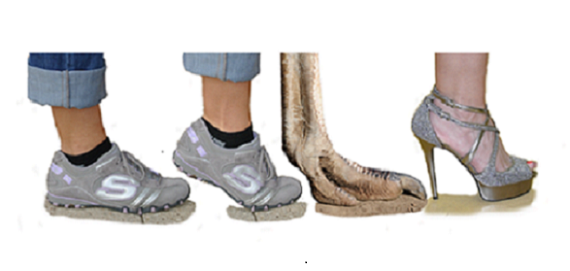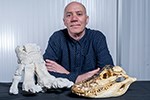These (human) feet are made for walking...
Dr Jim Usherwood contributes to a discussion on feet for the BBC World Service.
Many of us may think of walking as simply putting one foot in front of another. Often overlooked are the mechanics of how we walk and what enables this. Dr Jim Usherwood was recently invited to contribute to a discussion on BBC World Service show The Forum, aired on 5th January 2015, where he explained the biomechanics of the human foot and what part it plays in the way we walk.
Adult humans, he explained, are more suited to walking than running because of our relatively big flat stiff feet. They assist us to walk more economically, using little energy, as we move from one stiff legged vault to the next. As we go from one vault to another, we shove from the balls of our feet and crash with the heel of the next foot. During this stiff-legged vaulting period, the flat human foot allows forces to go through the ankle, leaving both shin and calf muscles largely unloaded. This is efficient because muscles use energy when opposing force.
Dr Usherwood goes on to highlight that humans have a similar walking method to ostriches. He does, however, emphasise that there is a contrast in foot structure, suggesting ostrich feet are far better adapted for running.

Improving our understanding of the walking mechanics in humans - and animals - can help to inform best practices for individuals learning to walk again following trauma.
The complete discussion - along with contributions from sport scientist Patrick Rump and writer Wang Ping - can be heard on the . Dr Usherwood has recently conducted research investigating the mechanics of walking in birds and toddlers, funded by the BBSRC and is a Wellcome Trust Senior Research Fellow in Basic Biomedical Science. For more detail on Dr Usherwood's work visit .
You may also be interested in:
-
RVC’s Professor John Hutchinson elected Fellow of prestigious Royal Society
John Hutchinson, Professor of Evolutionary Biomechanics at the °ÄĂĹÁůşĎ˛ĘąćÂÉÂŰĚł (RVC), has …

